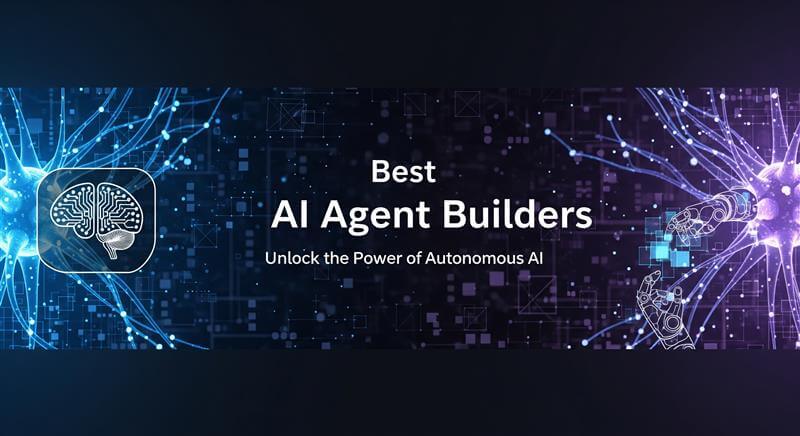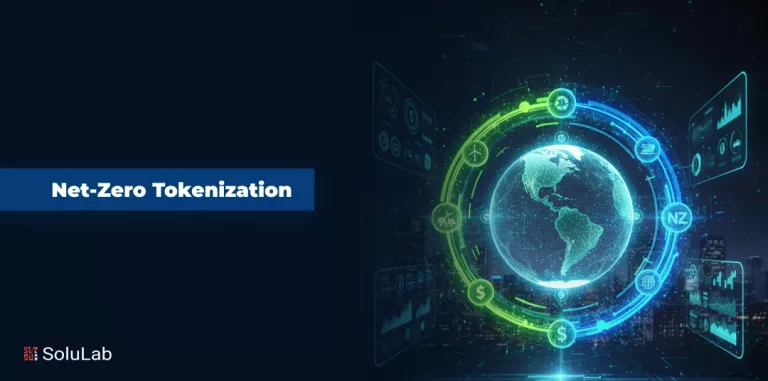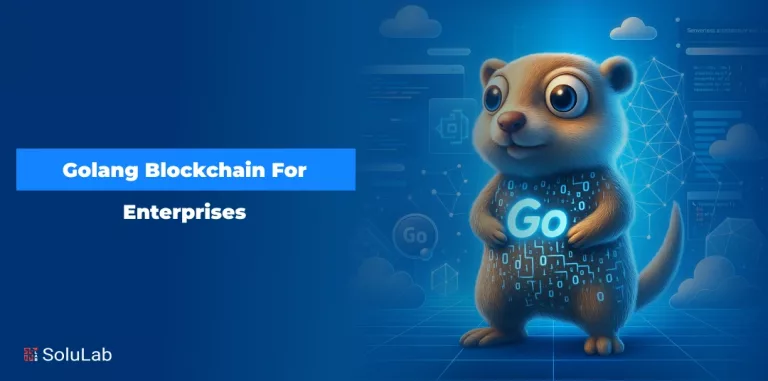
Have you ever asked your phone’s voice assistant for nearby restaurant recommendations or Netflix suggestions? If so, you’ve interacted with an AI agent. An increasing number of businesses are adopting AI-driven processes to automate tasks and improve efficiency. According to research, the AI agent market is expected to exceed $47 billion by 2030. This will also push the demand for AI agent builders.
As generative AI technology advances, AI developers are looking beyond simple prompt chaining. They now need solutions that enable long-term task orchestration, seamless API integration, and a modular framework. This is precisely where AI agent builders or AI developers come into play. Below is a thoughtfully compiled list of the 8 best AI agent builders in 2025, complete with brief overviews and key features to help you find the ideal match for your AI goals.
What is an AI Agent Builder?
An AI agent builder is a platform that enables you to design and manage AI-powered agents tailored to your business needs. Whether it’s streamlining customer support, driving sales, generating reports, or tackling coding challenges, these tools empower you to develop automation solutions specific to your requirements.
Most AI agent builders use a blend of machine learning (ML) and natural language processing (NLP) to interpret and respond to user inputs. More advanced platforms are now incorporating large language models (LLMs), which enhance agents’ reasoning and problem-solving capabilities. To fully harness the capabilities of these platforms, an increasing number of organizations and research labs are relying on expert AI developers who can craft custom pipelines and develop reliable, production-grade systems.
By offering intuitive interfaces and a variety of pre-built components, AI agent builders enable businesses to rapidly develop and deploy powerful automation solutions with ease.
Key Features That Make AI Agent Builders Valuable:
1. Modular Architecture
Agent builders provide a framework where components, such as planners, memory modules, and toolkits, can be easily swapped out or extended. This flexibility lets developers customize agent behavior to suit specific domains and workflows.
2. Language Model Agnosticism
By 2025, developers will routinely work with a mix of LLMs, including API-based options like OpenAI or Anthropic and self-hosted models. A robust agent builder should support seamless integration with multiple model backends, regardless of provider.
3. Tool and API Integration
An effective AI agent builder should enable developers to register external tools, REST APIs, database clients, and CLI interfaces as callable actions.
Top 8 AI Agent Builders 2025
1. TIR by E2E Cloud
TIR is a sophisticated AI agent builder platform with the potential to capture a larger market share. It is crafted for complex, LLM-driven workflows. It streamlines the orchestration of multi-agent tasks, chain-of-thought reasoning, and tool integrations, without the burden of managing heavy infrastructure. Powered by E2E Cloud’s high-performance ecosystem, TIR delivers a seamless experience, making it an ideal choice for AI/ML professionals based in India.
Key Features:
- Multi-Agent Orchestration: Effortlessly create agents that collaborate and delegate tasks.
- Native LLM Toolchain Support: Designed for modern LLM pipelines, prompt chaining, and API workflows.
- Cost-Effective Scaling: Leverage India’s most affordable AI compute platform for budget-friendly growth.
2. LangChain
LangChain continues to be a foundational open-source framework for AI agent development ecosystem, and by 2025, its transformation into LangGraph has empowered developers to design agents capable of handling dynamic workflows. LangChain streamlines agent creation by offering structured abstractions for LLMs, memory, tools, chains, and output parsers. In 2025, it has further matured with deeper integrations into vector databases, knowledge graphs, and autonomous memory systems.
Key Features:
- Stateful Orchestration: Graph nodes can hold and transmit intermediate states, supporting continuous reasoning.
- Flexible Model Integration: Works seamlessly with OpenAI, Claude, LLaMA, and local quantized models.
- Robust Memory Systems: Includes diverse memory modules such as ConversationBuffer, SummaryMemory, and VectorStoreMemory.
3. Copilot Studio by Microsoft
Microsoft’s Copilot Studio enables businesses to create and deploy AI agents across multiple channels, including websites and social media platforms. With its user-friendly graphical interface, even those with minimal coding expertise can build powerful agents. These AI agents can handle tasks such as data entry, report generation, employee onboarding, and ticket resolution. By embedding agentic AI into tools like Teams and SharePoint, organizations help employees streamline their daily workflows with intelligent assistance.
Key Features:
- Minimal coding required, making it accessible to non-developers
- Supports a wide range of AI agents, from basic Q&A bots to fully autonomous systems
- Offers advanced capabilities, such as Python code execution and image generation
4. Vertex AI Agent Builder
Vertex AI Agent Builder is Google Cloud’s enterprise-ready platform for crafting intelligent and task-oriented agents. Designed for both expert developers and amateurs, this platform compiles generative AI, automation, and secure integration, enabling anyone to build, deploy, and manage sophisticated AI agents at scale.
Key Features:
- Declarative & Visual Agent Setup: Build agents using an intuitive drag-and-drop interface or define their roles, goals, and behaviors through Python or YAML configuration.
- Pluggable Tooling: Equip agents with a wide range of built-in or custom tools, including search, API connectors, code execution, and enterprise data access
- Data and Model Integration: Connect agents to enterprise databases, Vertex AI Search, Retrieval-Augmented Generation (RAG), and Google’s language models for accurate, grounded outputs.
5. CrewAI
CrewAI brings a role-based approach to orchestrating multiple agents within a single application. This open-source multi-agent orchestration framework works together as a cohesive assembly for task completion. Each agent is given a specific role, complete with its tools, memory scope, and objectives, while the entire crew operates under a central orchestrator that manages their coordinated actions.
Key Features
- Declarative Setup: Define roles, tools, and objectives using Python configuration or a YAML DSL.
- Pluggable Tooling: Register tools globally and expose them selectively to different agents.
- Flexible Memory Models: Opt for shared memory to maintain group context or local memory for agent-specific state.
6. Autogen by Microsoft
Autogen stands out in the agentic ecosystem by focusing on multi-agent conversational systems. Each agent operates as an independent process, complete with its own persona, memory, and access to tools. This setup supports both human-in-the-loop and fully autonomous agents that can work together to achieve shared objectives. With its low-code interface, developers can rapidly design, test, and deploy sophisticated multi-agent solutions.
Key Features:
- Build LLM-driven workflows using a robust multi-agent conversation framework
- Accelerate development with pre-built systems tailored for diverse applications
- Design collaborative multi-agent solutions that work together to accomplish tasks
7. MetaGPT
MetaGPT is a cutting-edge open-source AI framework that converts natural language prompts into coordinated software development workflows. By assigning specialized roles to different AI agents such as product managers, architects, and engineers, MetaGPT effectively simulates an entire software company, automating both code creation and project management.
Key Features:
- Multi-Agent Collaboration: Builds virtual teams of AI agents that jointly tackle software projects.
- End-to-End Automation: Automatically produces complete software artifacts, from initial requirements through to deployment.
8. LlamaIndex Agents
LlamaIndex has become a go-to choice for data-focused professionals looking to build AI agents. Its agent framework is particularly powerful when your LLM needs to directly interact with diverse data sources.
Key Features:
- Data-Aware Agents: Seamlessly connect to PDFs, SQL and NoSQL databases, Google Drive, and more.
- Auto-RAG Pipelines: Automatically retrieve relevant context before generating outputs.
- Structured Responses: Deliver outputs in JSON, tables, or hierarchical data formats.
Conclusion
As AI technology evolves, AI agents are emerging as one of the most disruptive trends for the year ahead. These smart assistants are reshaping workflows, automating routine tasks, and boosting decision-making across a wide range of industries.
When evaluating these platforms, start by identifying your core workflow needs, such as multi-agent collaboration or sustained autonomous operations. This will help you partner with the best AI development company and stay ahead in this automated business era.




